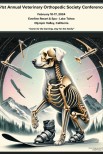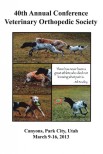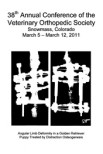OBJECTIVES: To describe the normal anatomy of the soft tissues of the canine tarsus as identified on computed tomography (CT) and magnetic resonance imaging (MRI) and to evaluate specific MRI sequences and planes for observing structures of diagnostic interest.
STUDY DESIGN: Prospective descriptive study.
ANIMALS: Canine cadavers (n = 3).
METHODS: A frozen cadaver pelvic limb was used to trial multiple MRI sequences using a 1.5 T superconducting magnet and preferred sequences were selected. Radiographs of 6 canine cadaver pelvic limbs confirmed the tarsi were radiographically normal. A 16-slice CT scanner was used to obtain 1 mm contiguous slices through the tarsi. T1-weighted, proton density with fat suppression (PD FS) and T2-weighted MRI sequences were obtained in the sagittal plane, T1-weighted, and PD FS sequences in the dorsal plane and PD FS sequences in the transverse plane. The limbs were frozen for one month and sliced into 4-5 mm thick frozen sections. Anatomic sections were photographed and visually correlated to CT and MR images.
RESULTS: Most soft tissue structures were easiest to identify on the transverse MRI sections with cross reference to either the sagittal or dorsal plane. Bony structures were easily identified on all CT, MR, and gross sections.
CONCLUSIONS: The anatomy of the canine tarsus can be readily identified on MR imaging.









